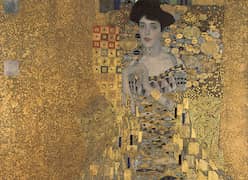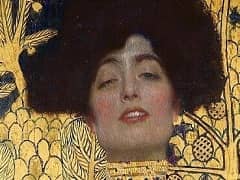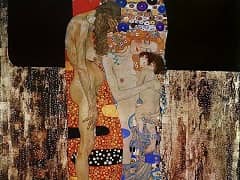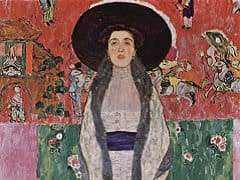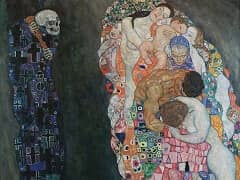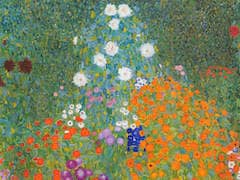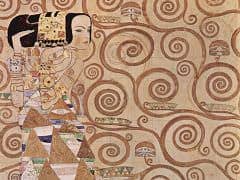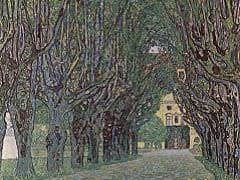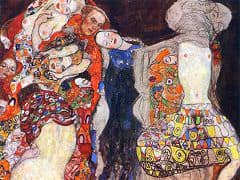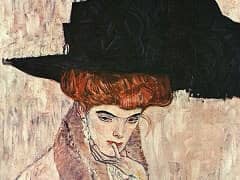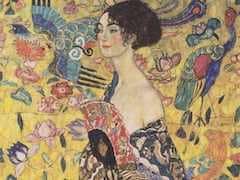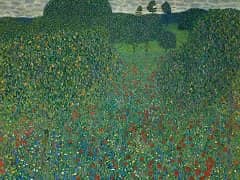Hofburg Actor Josef Lewinsky as Carlos, 1895 by Gustav Klimt
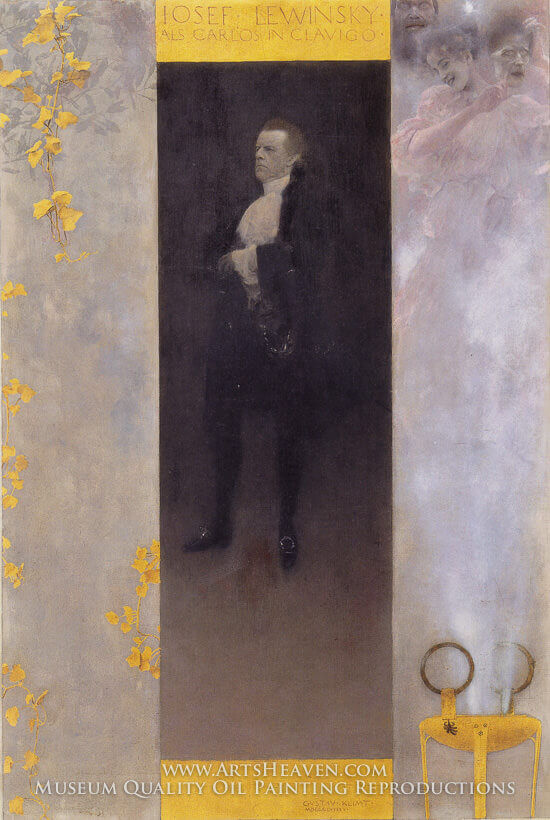
As the title engraved in the gold panel at the top indicates, this portrait, like Love, also includes an allegory - that of theatrical spectacle. The self-conscious pose of the
actor, the girl on the right holding the mask, and the third, gargoyle-like head all remind us that this portrait is a staged presentation of the subject, who is posed and framed for our perusal.
Like Love, this portrait makes use of the frame to comment further on the principal subject. A formal tension is set up by the contrast between the frame and its painted surface;
the stylized image of the sacred Delphic tripod and the realistic depiction of Lewinsky; the decorative leaves and the shadows they appear to cast; and the three heads - living, mask and statue. The
combined effect is to make the viewer question what is real; however good a likeness a portrait is, it can never be more than a series of overlapping coloured brushstrokes.
The use of lettering within the painting itself appears in several of Klimt's subsequent works: the Nuda Veritas, and Judith and the Head of Holofernes. This was
related to Klimt's preoccupation at that time with graphic design and printing; sketchbooks from the 1890s reveal his experiments with alphabets and typography.



